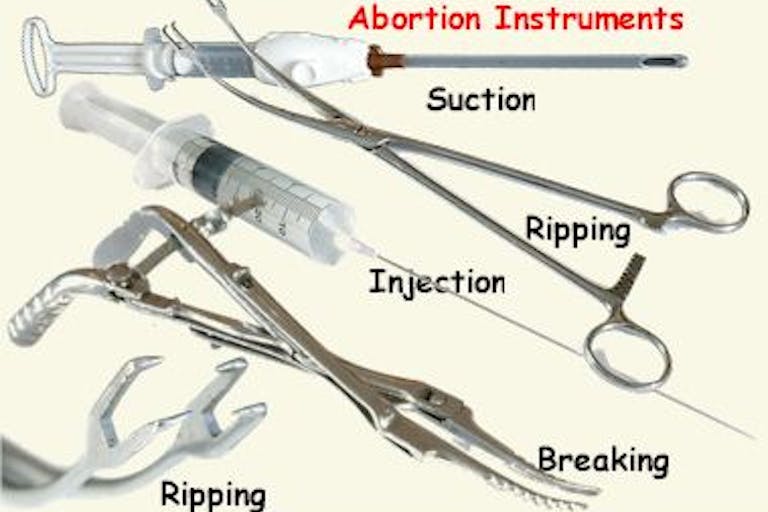
14th Texas county outlaws abortion and use of roads for ‘abortion trafficking’
Mark Lee Dickson
·
Human Rights·By Kristi Burton Brown
Torture inflicted by Gosnell a perfect picture of abortion in America
On April 12, the Washington Post published an editorial by Jordan Sekulow and Matthew Clark on the Gosnell trial. The editorial brings to light the schizophrenic mindset that allows many Americans to be horrified by Gosnell’s actions but perfectly okay with abortion in general. Sekulow and Clark write:
The details emerging from this trial are too graphic for us to even put into words, yet our society allows this same unspeakable torture of another human being to occur just so long as the baby is still inside the womb.
Megan McArdle of the Daily Beast also took to her writing on the 12th to explain her silence on Gosnell:
So I’ll tell you why I haven’t covered it.
To start, it makes me ill. I haven’t been able to bring myself to read the grand jury inquiry. I am someone who cringes when I hear a description of a sprained ankle.
But I understand why my readers suspect me, and other pro-choice mainstream journalists, of being selective—of not wanting to cover the story because it showcased the ugliest possibilities of abortion rights. The truth is that most of us tend to be less interested in sick-making stories—if the sick-making was done by ‘our side.’
Americans should be left to ponder – and ponder long and hard – over how we can find Gosnell’s actions in snipping the spinal cords of babies “unspeakable torture,” the “ugliest possibilities,” and downright “sick,” while we consider abortion a simple matter of a “woman’s right.” Come again? Are Americans even aware of what abortion really is? Do we know exactly how babies are killed inside the womb?
If it’s torture outside, how can it be any different inside?
For instance, if an American prisoner of war had his bones intentionally broken, his back beaten until his skin split, and bamboo shoved under his fingernails, would it really matter if he was inside a jail cell or outside in the jungle when it happened? Would it really matter if photos were taken of his torture or if his torturers were the only ones who witnessed what happened to him?
In reality, few Americans can describe the process of abortion. It’s easy to say that you support a supposedly “medical” procedure when you have little or no idea how that procedure is actually performed. Read the following accurate descriptions of abortion and see if you can fully support such actions:
Once the cervix is dilated, the abortionist inserts tubing into the uterus and attaches the tubing to a suction machine. Suction pulls apart the fetus’ body and out the uterus. After suction, the doctor and nurses must reassemble the fetus’ dismembered parts to ensure they have all the pieces.
Did you get that? The baby’s body is literally pulled apart by the force of suction. If you want to read an actual story about this kind of abortion, written by a former Planned Parenthood employee who witnessed it, go here. In part, the story relates:
Article continues below
Dear Reader,
In 2026, Live Action is heading straight where the battle is fiercest: college campuses.
We have a bold initiative to establish 100 Live Action campus chapters within the next year, and your partnership will make it a success!
Your support today will help train and equip young leaders, bring Live Action’s educational content into academic environments, host on-campus events and debates, and empower students to challenge the pro-abortion status quo with truth and compassion.
Invest in pro-life grassroots outreach and cultural formation with your DOUBLED year-end gift!
At first, the baby didn’t seem aware of the cannula. It gently probed the baby’s side, and for a quick second I felt relief. Of course, I thought. The fetus doesn’t feel pain. I had reassured countless women of this as I’d been taught by Planned Parenthood. The fetal tissue feels nothing as it is removed. Get a grip, Abby. This is a simple, quick medical procedure. My head was working hard to control my responses, but I couldn’t shake an inner disquiet that was quickly mounting to horror as I watched the screen.
The next movement was the sudden jerk of a tiny foot as the baby started kicking, as if it were trying to move away from the probing invader. As the cannula pressed its side, the baby began struggling to turn and twist away. It seemed clear to me that it could feel the cannula, and it did not like what it was feeling. …
My eyes shot back to the screen again. The cannula was already being rotated by the doctor, and now I could see the tiny body violently twisting with it. For the briefest moment the baby looked as if it were being wrung like a dishcloth, twirled and squeezed. And then it crumpled and began disappearing into the cannula before my eyes. The last thing I saw was the tiny, perfectly formed backbone sucked into the tube, and then it was gone.
Does this description sound any less horrific than the descriptions Gosnell’s former employees have been giving on the witness stand? Is this kind of unspeakable torture and cruelty actually okay with Americans?
Second-Trimester Abortion
One method of abortion done in the second trimester is described by Warren Hern, an abortionist based in Boulder, Colorado. He wrote a textbook on performing abortions and is certainly an expert.
The procedure changes significantly at 21 weeks because fetal tissues become much more cohesive and difficult to dismember. … A long curved Mayo scissors may be necessary to decapitate and dismember the fetus.
And before anyone starts thinking that this procedure shouldn’t be allowed on the basis that the baby is viable, please remember that the youngest reported surviving preemie was born at 21 weeks and 5 days.
But regardless of viability, what about this description – decapitating a baby – is different from the description given by Steven Massof, a Gosnell employee, about what occurred in that clinic?
Later he began doing first trimester procedures and eventually took on the ‘second tris,’ testifying that he saw over 100 babies born alive who had their necks snipped in what he said was ‘literally a beheading. It is separating the brain from the body.’
How can one procedure be any more or less horrible than the other? This is a question Americans must face and answer.
As Sekulow and Clark succinctly put it:
But the question remains: How can killing a newborn infant be illegal and shocking to the collective conscience, yet ending that same life moments, days or weeks before be perfectly legal and socially acceptable as long as the baby is still in the womb? There is no logical answer.
Aside from how a baby receives food and oxygen, what changes occur to make the baby human out of the womb but something other than human the second before? Does the baby’s brain magically begin activity; does his or her heartbeat suddenly begin; does the baby abruptly begin moving on his or her own after birth? No, of course not. A baby possesses all of these qualities of life in utero.
Live Action News is pro-life news and commentary from a pro-life perspective.
Contact editor@liveaction.org for questions, corrections, or if you are seeking permission to reprint any Live Action News content.
Guest Articles: To submit a guest article to Live Action News, email editor@liveaction.org with an attached Word document of 800-1000 words. Please also attach any photos relevant to your submission if applicable. If your submission is accepted for publication, you will be notified within three weeks. Guest articles are not compensated (see our Open License Agreement). Thank you for your interest in Live Action News!

Mark Lee Dickson
·
Human Rights
Bridget Sielicki
·
Human Rights
Carole Novielli
·
International
Angeline Tan
·
Human Rights
Nancy Flanders
·
Human Rights
Angeline Tan
·
Newsbreak
Kristi Burton Brown
·
Newsbreak
Kristi Burton Brown
·
Issues
Kristi Burton Brown
·
Newsbreak
Kristi Burton Brown
·
Newsbreak
Kristi Burton Brown
·